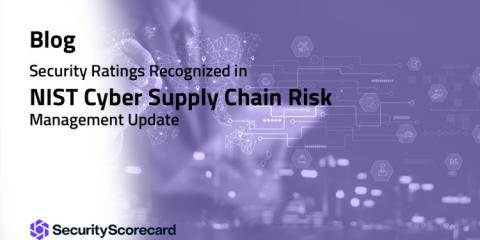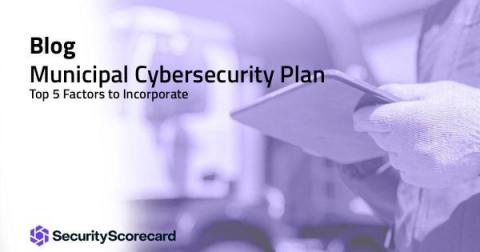Security | Threat Detection | Cyberattacks | DevSecOps | Compliance
Latest News
Security Ratings Recognized in NIST Cyber Supply Chain Risk Management Update
On May 5, 2022, the National Institutes of Standards and Technology (NIST) formally recognized outside-in third party security ratings and vendor risk assessment in their update to Special Publication 800-161. This update to federal standards specifically cites security ratings as a “foundational capability that "provide 14028." NIST SP 800-161 was designed to standardize supply chain risk management best practices for federal agencies and industry.
5 Historic Third Party Breaches
Third-party data breaches are one of the most concerning issues in cybersecurity today. You need your third parties to do business, but you can’t always trust (or verify) that their cybersecurity controls are as strong as they say, no matter how many questionnaires you send out. And of course, cybercriminals know that by hitting vendors rather than every single company separately, they can get the most ill-gotten gains for their effort.
Monitoring Data Risks & Investigating Threats Faster With the Rubrik Data Observability Engine
Why is it that the most impressive technologies are often the ones that go unnoticed? Sometimes what makes technology impressive is precisely that it goes unnoticed, and that is the case with the Rubrik Data Observability engine. As ransomware continues to grow as a real, costly, and persistent threat to conducting business, organizations are looking for smarter and faster ways to keep data safe and recover easily in the face of cyber attacks.
Third-Party Risk Management Regulations: What You Should Know
Without a doubt, partnering with third parties has many advantages, including boosting the functionalities and performance of an organization. But despite the benefits, third parties also introduce a host of risks to an organization, potentially disrupting operations, affecting financial standing, and harming reputation. An understanding of third-party risk management regulations is essential in order to protect your organization from a security breach and maintain a positive security posture.
SecurityScorecard together with SessionGuardian
Instantly view your organization’s cybersecurity posture + continuously monitor and verify identity.
Zhadnost and Killnet : Distant cousins or aligned strangers?
This blog is the latest in a series dedicated to Zhadnost, a Russia-aligned botnet first discovered by SecurityScorecard in March.
NIST Free security assessment tool
Municipal Cybersecurity Plan: Top 5 Factors to Incorporate
Cyber attacks on state and local governments continue to be on the rise. With more attacks targeting municipalities, there needs to be a push toward boosting cyber preparedness. Even though the risks remain at an all-time high for municipalities, the lack of budget and knowledge has caused officials to put cybersecurity on the back burner.










